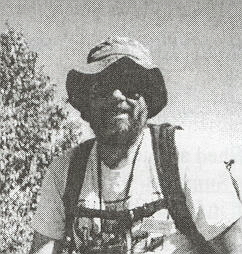

Home | Summit Guide | History | Completers | Newsletter | History | Conventions | Store | Forum
Search | Books | Museum | Links | Webrings | Membership | Access Issues |Contact


|
Apex to Zenith 1st Quarter 2000 by Fred Lobdell |
 |
It's been a relatively quiet quarter on the county highpointing front. Bob Packard and I ended the year, and the 1900s, tied at 442 counties. John Straw (see below) enters the Century Club with about 126 counties, and Steve Mueller is another newcomer with 108 as of November. Most other CC members made little or no additional progress.
The big news this quarter came from Michigan where John Straw visited the HPs of 80 of his home state's 83 counties. This is an amazing accomplishment, and the first midwestern state to get anywhere near this close to being completed. On the remaining three counties, John got as close as he could at present, with access blocked for now. The toughest of these seems to be Macomb County, where a Ford Motor Co. testing track, runs right over the county HP. Are there any Ford employees out there who might be able to help out with gaining access to this site?
Linda Moulton reports that Migsy Namesake has only North Pal left to finish CA.
This is a good time of year to take stock and lay out goals for the coming hiking season. I'm aware of several people who have said they would like to get started doing county HP's this year. Two of the real advantages to county (as opposed to state) Hping are (1) there are many more counties than states, and (2) many of them are close to home and can be visited on day and weekend trips rather than having to plan vacation trips of hundreds or thousands of miles.
So how do you go about ge tting started in county HPing? First, if you're interested in just one state, you can send Andy Martin (3030 N. Sarsaparilla Dr., Tucson, AZ 85749) a legal-sized SASE and he'll send you a list of the county HPs for that state. If you're interested in more than one state, send him $ 10 for a book listing all the county HPs in the country, postpaid.
Second, after finding out where the county HPs are, you discover that in most cases copies of the topographic maps are desirable or essential. These maps are sold for $4 eachby the U. S. Geological Survey and are available in many outdoor stores at a slight markup, but your local municipal or college library may be able to help out.
Many of the larger libraries have fairly complete map collections, and it's much cheaper to make photocopies than to buy the maps.
Another map resource is Topozone www.topozone.com which has all the U.S. topographic maps, except Alaska, on line at scales ranging from 1:25,000 to 1:200,000. If you have access to a printer capable of handling these maps, then this is another way to get them.
You should be aware that many county HPs are in wooded, trailless areas and require decent map-and-compass skills. And if you have access to the Internet and have e-mail, then more resources are available.
Roy Wallen and Adam Helman have been editing and posting trip reports on a Website:
Currently more than 500 trip reports have been posted. These range from brief commentary on conditions at the HP to relatively complete directions on how to get to the HP. There is also a daily newsletter and discussion group devoted to county Hping. Contact Andy Martin (martin@mmsi.com) to receive some sample posts. Even if you're not on-line, other resources are available in some instances.
Guidebooks have been written to the county HP's of three states, and
in a number of other states general hiking and climbing guidebooks cover
many of the HP's.